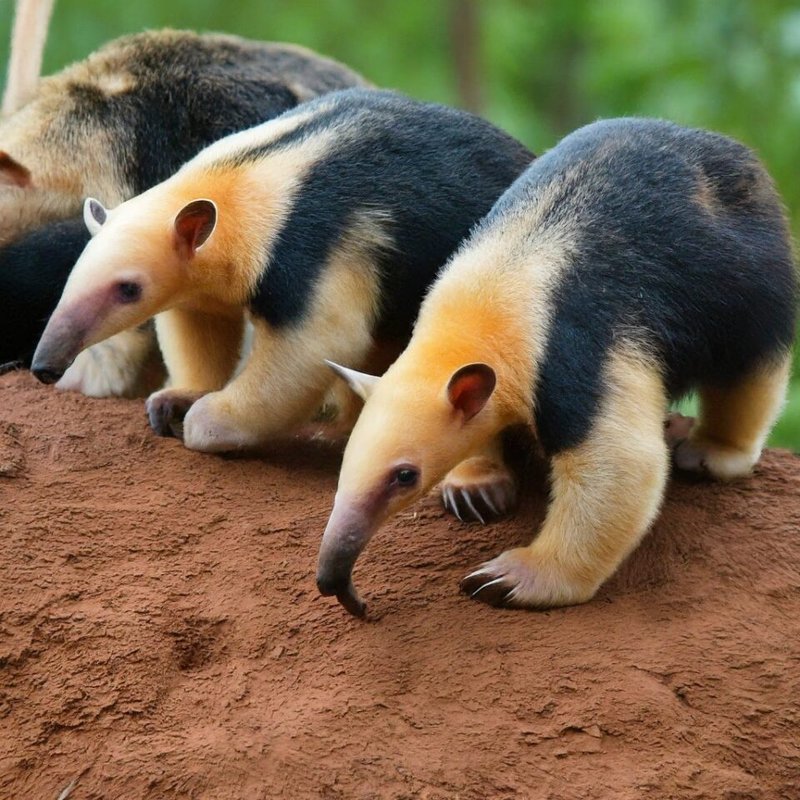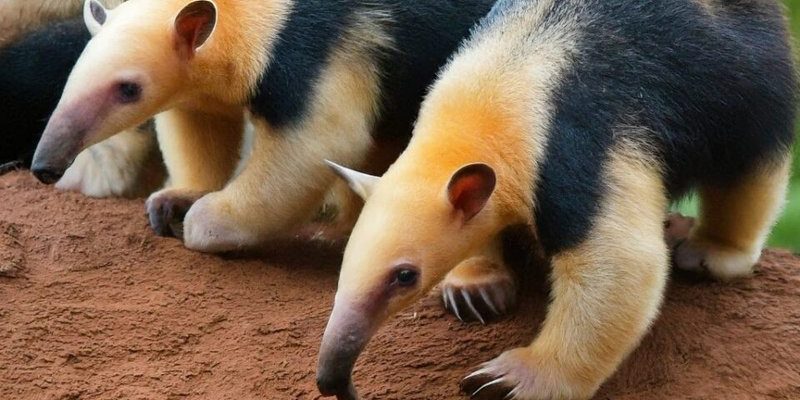
Let’s dive into the fascinating world of creatures similar to the anteater. We’ll explore their characteristics, habitats, and how to distinguish them from one another. So grab a cup of coffee, and let’s embark on this animal discovery journey!
The Basics of the Anteater
Before we jump into our list, it’s good to understand what makes the anteater special. There are four main species of anteater, with the giant anteater being the most well-known. These critters are equipped with long, sticky tongues that help them slurp up ants and termites—yummy snacks for them! They have strong claws for digging and a nose specifically designed for sniffing out their favorite meals.
Anteaters typically roam through Central and South America, often found in forests, grasslands, and savannas. The unique shape of their bodies allows them to fuel their incredible diets with efficiency, making them quite an interesting species to study. Now, let’s explore some of their lookalikes!
1. Aardvark
The aardvark is often the first animal people think of when comparing it to the anteater. Both are nocturnal foragers and have long snouts designed for sniffing out insects. However, they live in Africa, not the Americas.
These creatures are stockier than anteaters, with a strong build and ears that resemble those of a rabbit. Aardvarks primarily eat ants and termites, using their long tongues to extract them from their mounds, much like their anteater cousins.
If you ever spot one, look for their distinctive, wedge-shaped snouts and large, rounded ears. So while they share similar dietary habits, the African aardvark and the anteater are different enough to tell them apart.
2. Pangolin
Now here’s a unique animal that definitely deserves a shout-out. The pangolin is often mistaken for an anteater due to its long snout and insect-eating habits. However, it’s covered in hard, protective scales made from keratin, which gives it a completely different appearance.
Pangolins are found mainly in Asia and Africa, and they roll into a ball when threatened, unlike anteaters, which are more likely to stand their ground. Their long tongues and digging habits make them quite similar in dietary preference; just remember that the pangolin is a scaly creature and definitely stands out in the animal kingdom.
3. Armadillo
Let’s talk about the armadillo. These little guys are often seen as quirky because of their bony armor and habit of rolling into a ball. They’re also native to the Americas, just like the anteater. While armadillos have a completely different body shape and are much smaller, they share a diet of insects and grubs.
When looking for differences, the armadillo has a more rounded body and a leathery shell, which allows it to curl up for protection. Their snouts are also shorter than those of anteaters, making it easy to spot them when you know what to look for.
4. Sugar Glider
Now, this one might surprise you! The sugar glider is not an insect-eating mammal but a small, nocturnal marsupial from Australia. Although they don’t share the same diet as anteaters, they are both arboreal, meaning they love to live in trees!
Sugar gliders have large, expressive eyes and a membrane that allows them to glide between branches. They come in various colors, primarily grey and brown, which helps them blend into their forest habitats. While they don’t share the same diet, telling them apart is easy when you see those adorable big eyes and unique gliding abilities.
5. Northern Tamandua
Meet the northern tamandua, a relative of the anteater! This creature shares many similarities with the giant anteater but is much smaller and has a more compact body. Tamanduas are often found in Central and South America, just like their larger cousins.
They have long, prehensile tails that help them balance as they climb trees, looking for ants and termites. The main difference? Tamanduas have fur-covered bodies and distinctive markings, with a black and yellow coloration that makes them unique. So if you see what looks like a small anteater in the trees, it might just be a tamandua!
6. Naked Mole Rat
It’s hard to forget about the naked mole rat, a truly astonishing creature that shares some common ground with the anteater in terms of dietary habits. Naked mole rats primarily feed on underground plant parts, digging with their sharp teeth.
Though their appearance is entirely different, they’re both specialized for eating within a particular niche. Naked mole rats are mostly hairless, with wrinkly skin and large front teeth. The anteater, on the other hand, remains furry and has a long snout for its insect diet.
7. European Badger
Next up is the European badger. While they primarily feed on earthworms and insects, their stocky bodies and bushy tails might make you think of anteaters from a distance. Badgers have broad heads and short legs, which set them apart from the sleek body of an anteater.
You’ll find them primarily in Europe and parts of Asia, where they live in burrows and are mostly nocturnal. If you catch a glimpse, remember that badgers have a more robust, compact shape compared to the slender anteater.
8. Tasmanian Devil
Finally, let’s discuss a famous marsupial, the Tasmanian devil. Known for their feisty personality and fierce growls, these little guys mostly eat carrion but can also feast on insects, similar to the anteater.
They have a stocky build with a broad head and can be found in Tasmania. Unlike the anteater, the devil has a more robust body and is known for its loud and active behavior. So, while they might share a taste for insects, their behaviors and appearances are quite different.
9. Spiny Anteater (Echidna)
You might be surprised to learn about the spiny anteater, also known as the echidna. This Australian native has a spiny exterior and shares the anteater’s love for ants and termites. Unlike anteaters, echidnas lay eggs, making them one of the few mammals that do!
Echidnas have a snout similar to that of the anteater, but they are covered in spines that give them extra protection. Their quirky, spiky appearance and egg-laying ability set them apart from their South American relatives.
10. Hedgehog
Our last animal on the list is the hedgehog. Like the echidna, hedgehogs have spines covering their bodies, which helps protect them from predators. They’re known for curling up into a tight ball when threatened, unlike the anteater, which faces danger head-on.
Hedgehogs mainly eat insects and tend to be found in Europe, Asia, and Africa. While both share some dietary habits, the hedgehog is much smaller, and its spiky exterior is a defining feature.
In summary, the world of animals is packed with fascinating creatures that might resemble the anteater in some ways but are unique in their own right. Whether it’s their habitat, diet, or distinct physical features, knowing these differences can deepen your appreciation for wildlife.
So next time you see an anteater, take a moment to think about its relatives and how nature has crafted such diverse ways to thrive!

